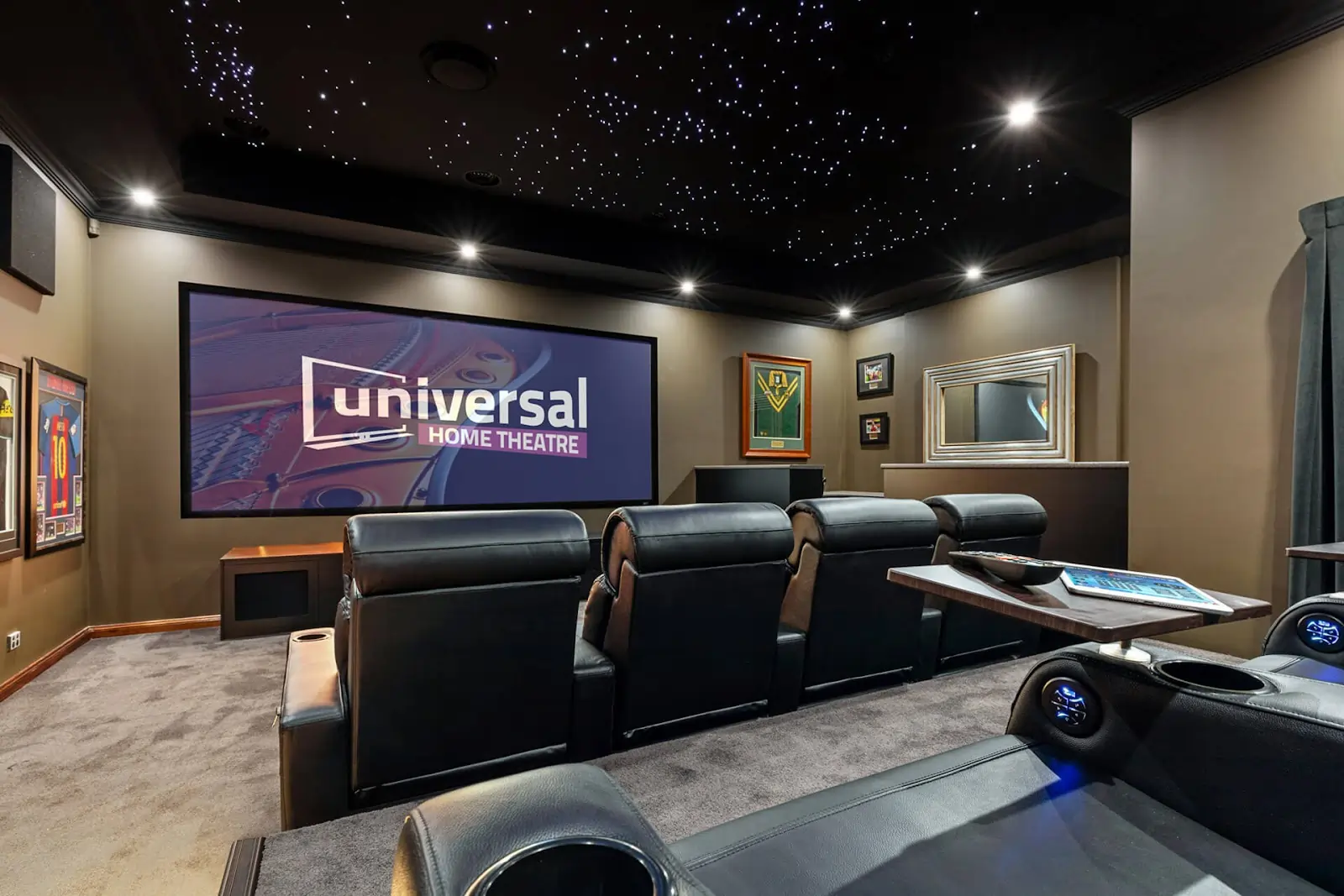A home theater is no longer just a luxury. For many, it’s a must-have addition that transforms movie nights and gaming sessions into immersive experiences. Whether you’re a cinephile, a gamer, or someone who simply enjoys great TV, creating the perfect home theater can take your media enjoyment to the next level. This guide will walk you through the process, including the critical role audio video installation plays in achieving exceptional results.
Planning Your Home Theater
Before jumping into the specifics of audio and video equipment, start with planning. A well-thought-out home theater reflects your space, preferences, and budget.
Key Considerations
- Room Size and Layout
Measure your available space and choose a room that can be dedicated to your home theater. The shape and size of the room will influence the arrangement of your seating, speakers, and screen.
- Budget
Determine how much you’re willing to invest. Planning a budget will allow you to prioritize equipment without overspending on unnecessary extras.
- Lighting
Control over lighting is key for a high-quality viewing experience. Rooms with minimal windows or the ability to use blackout curtains work best.
With these aspects in mind, you’ll have a foundation for building your home theater.
Choosing the Right Audio Components
Sound is a defining part of any home theater experience. The right audio setup makes you feel like you’re in the heart of the action.
Types of Audio Systems
- Soundbars
A compact option that blends seamlessly with most spaces, soundbars provide improved sound without the complexities of full surround systems.
- Surround Sound Systems
For an immersive experience, consider a 5.1 or 7.1 surround sound system. These configurations use multiple speakers, including subwoofers, to create depth and dimension in audio.
- Dolby Atmos and Advanced Setups
If you’re looking for cutting-edge sound, Dolby Atmos-enabled systems feature overhead sound for a truly three-dimensional experience.
Placement Tips
- Position your main speakers at ear level and ensure they are angled correctly for your seating arrangement.
- Subwoofers work best when placed near walls or in corners for maximum bass impact.
Selecting the Ideal Video Components
The video display is the centerpiece of your home theater. Thankfully, there are incredible options to fit different needs and space constraints.
Projectors vs. TVs
- Projectors: A great choice for dedicated theater rooms, especially if you want the cinematic feel of a large screen.
- TVs: A slightly easier option with excellent 4K and OLED models now offering stunning visuals and deep colors.
Screen Size and Resolution
Opt for a screen size that fits your room and sitting distance. A resolution of 4K is now the standard, but if you want to future-proof your setup, consider units with 8K.
Professional Audio Video Installation
While it can be tempting to DIY your home theater, a professional audio video installation ensures every component is optimized for your space. Installers consider acoustics, wiring, and placement to create the best possible setup while eliminating common errors.
Key benefits of professional installation:
- Expert calibration for sound and video
- Seamless cable management to maintain a clean look
- Troubleshooting and guidance to avoid technical hiccups later on
Setting Up Your Home Theater
For those eager to set everything up themselves, follow these simple steps to get started:
- Set your screen or projector at an appropriate height relative to your seating.
- Place speakers following the guidelines for a surround sound system or soundbar.
- Connect your devices (Blu-ray player, gaming console, streaming box) and test connections.
- Manage wires using hidden conduits or cable organizers.
- Test sound and video adjustments to ensure settings suit your room.
Optimizing Your Home Theater
To fully enjoy your new home theater, consider these final touches:
- Install acoustic panels to minimize sound distortion and enhance clarity.
- Use a universal remote or mobile app to simplify controls.
- Update your system’s firmware regularly for the latest features.
Troubleshooting Common Issues
Some common problems can occur even after everything is set up. Here are quick fixes:
- Sound Not Syncing: Double-check HDMI handshake settings or use the “audio delay” feature.
- Weak Wi-Fi: Use a signal booster to ensure reliable streaming.
- Video Flickering: Replace cables or upgrade to high-speed HDMI for 4K content.
The Future of Home Theater Technology
With rapid advancements in technology, the possibilities for home theaters are limitless. Features like AI-enhanced audio, wireless speaker systems, and 8K projectors are already shaping the next generation of immersive experiences.
Enjoy Your Perfect Home Theater Setup
Creating a home theater is a rewarding project that brings entertainment to life. Whether you’re enjoying intense movie soundtracks or vibrant visuals, a well-executed setup designed with thoughtful audio video installation can completely transform how you consume media.
Thinking about setting up your ultimate home theater? Don’t wait! Start planning your dream space today and immerse yourself in unparalleled entertainment.
Read more: How a Health Coach Can Help You Achieve Your Fitness Goals
Why Professional Vacation Rental Property Management is Worth the Investment
How to Fix a Refrigerator That’s Not Cooling
